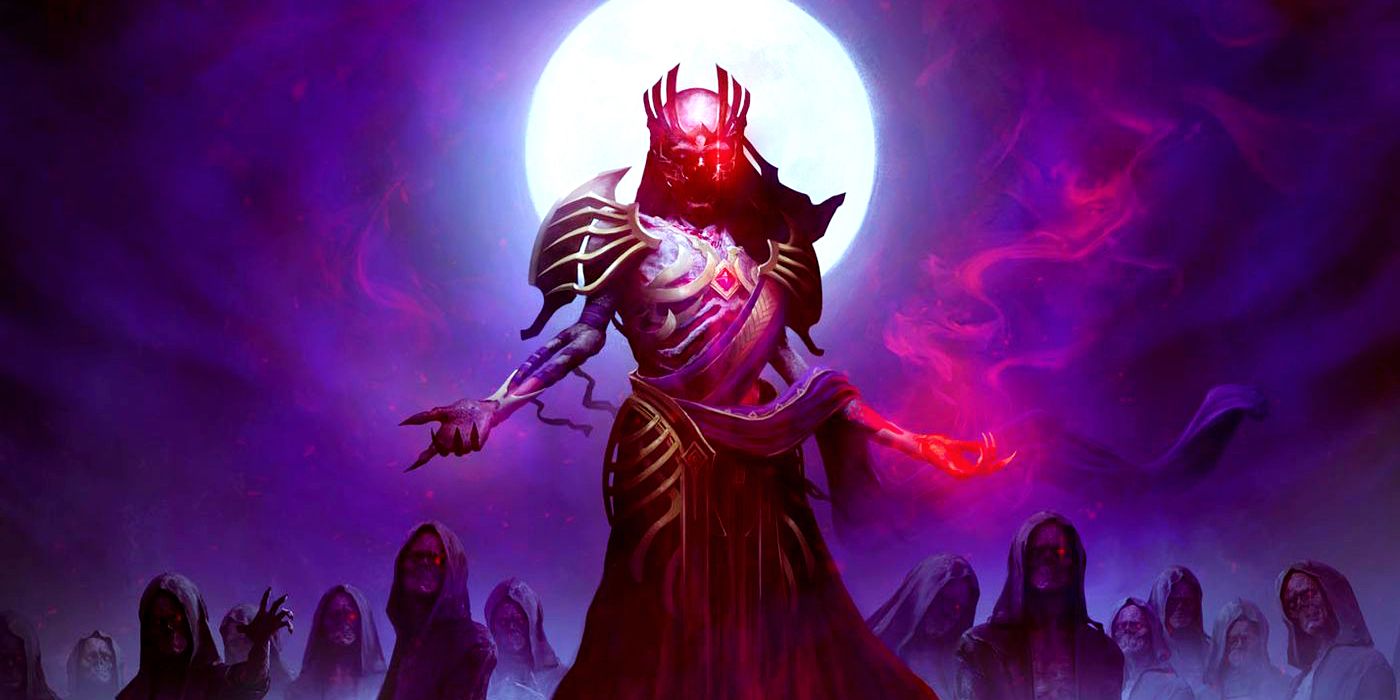
Resumo
- Vecna: Véspera da Ruína presta homenagem D&Dhistória adaptando uma masmorra clássica.
- Tumba dos Horrores é um icônico D&D masmorra, mas não se sustenta na filosofia de design moderno.
A tumba das almas rebeldes em Véspera da Ruína é uma reimaginação muito melhor da masmorra, mantendo sua alta dificuldade, mas introduzindo elementos mais interessantes.
O épico Masmorras e Dragões módulo Vecna: Véspera da Ruína é uma homenagem aos 50 anos de história do RPG de mesa, mas também destaca o quanto o design de aventura melhorou, especialmente com sua homenagem ao infame Tumba dos Horrores. Como D&D evoluiu a partir de suas raízes nos jogos de guerra em Cota de malha, surgiu o foco em heróis individuais realizando missões fantásticas. A exploração de masmorras era o principal modo de jogo, daí o nome do jogo. Adaptações multimídia como o filme Honra entre ladrõesa longa duração Legado de Drizzt série de romances, e até funciona como Papel Críticomostre moderno D&Dênfase em contar histórias e roleplaying.
[Warning: Spoilers for Tomb of Horros & Vecna: Eve of Ruin.
Some view Tomb of Horrors as DnD’s deadliest challenge, but this presents the module in an overly favorable light. DnD co-designer Gary Gygax ran Tomb of Horrors at gaming tournaments, purportedly to humble overconfident players who felt their characters were incapable of defeat. While many stories about the adventure may be apocryphal, it does seem reasonable that the module would have led to the deaths of characters that could handle a more reasonable challenge with ease. Gygax supposedly described Tomb of Horrors as a “thinking person’s module,” but the dungeon is not one where calculated, rational thinking leads to certain success.
Related
Vecna: Eve Of Ruin Contains A Tomb Of Horrors Homage
The Tomb Of Wayward Souls Is A Better Version Of The Classic Dungeon
Meticulous caution can initially help the party in Tomb of Horrors, including staples such as searching every surface for traps and secret doors, and liberally making use of 10-foot poles and summoned monsters to expose other hazards. Other segments of the dungeon eschew all logic and reason, depending on lucky guesses and feats of intuition that are essentially second-guessing the mind of Gary Gygax more than that of Acererak the lich. The adventure follows the old-school design paradigm where heroes are given little motivation to enter the dungeon beyond the lure of treasure and a desire to overcome brutal challenges.
Conversely, Vecna: Eve of Ruin offers excellence in high stakes, high-level DnD adventuring. There is a real sense of urgency to the module, since the Archlich Vecna plans to rewrite the multiverse itself. Players interact with many interesting NPCs, ranging from card sharks in the casinos of Hell to some of DnD’s most legendary wizards. Social interaction is a higher priority than it was in old-school modules, and the acquisition of personal secrets in Eve of Ruin has a mechanical impact at a later point in the adventure. Tomb of Horrors included only one NPC for heroes to talk to.
Tomb of Horrors has been adapted to subsequent editions of Dungeons & Dragons, and its more recent revisions typically eschew some of the instant kill traps and puzzles. The 5e DnD version in Tales of the Yawning Portal does still feature several instant death traps with no saving throw, however.
Some veteran fans praise the freedom involved with early DnD adventures, which were devoid of “railroading,” despite the lack of urgency or storytelling in most modules. Eve of Ruin offers vital choices for players that can have a significant impact on the course of the adventure. These are meaningful decisions based on in-character roleplaying, not the random guesses an adventure like Tomb of Horrors asks players to make. The seventh chapter of Eve of Ruin takes place in DnD’s classic Greyhawk setting and contains an homage to Tomb of Horrors with its similarly designed dungeon called Tomb of Wayward Souls.
Tomb of Wayward Souls Illustrates How D&D Has Evolved
Tomb Of Horrors Is A Relic Of The Past, But Vecna: Eve Of Ruin Is A True Epic
While the Tomb of Wayward Souls is a segment of Eve of Ruin that embraces its throwback vibe, it effortlessly outdoes the classic module. The puzzles follow a more coherent logic, and it makes use of modern mechanics like Perception checks and saving throws for traps and hazards, where the original required specific player actions and featured instant death traps. The adventure’s modernized Tomb of Horrors is larger in size and complexity, and contains one of Eve of Ruin’s best magic items, where the original offered little in the way of useful loot until the very end of Acererak’s dungeon.
Related
Tomb of Wayward Souls offers more opportunities for interaction than its inspiration, and its Treant has more characterization than the lone Siren trapped in the original Tomb of Horrors. The final boss, Rerak, a false lich created by Acererak, can be reasoned with, as players might detect its reluctance to battle through passive Insight. The stakes of Tomb of Wayward Souls are clearly higher, since it holds a piece of the Rod of Seven Parts, a relic required to save the multiverse from Vecna. Rerak remains one of Vecna: Eve of Ruin’s strongest monsters, on par with the original’s Demilich.
The original Tomb of Horrors could be completed in several hours at DnD tournaments, and its Tales of the Yawning Portal 5e DnD version can be finished in a few sessions. The scope and scale of an epic module that covers levels 10 through 20 obviously goes beyond this, but the contrasting design philosophy is a better comparison. Tomb of Horrors was directly referenced in the novel Ready Player One and is held in high regard by some old school enthusiasts. Vecna: Eve of Ruin is a truly epic Dungeons & Dragons adventure, illustrating the game’s evolution for the better.
